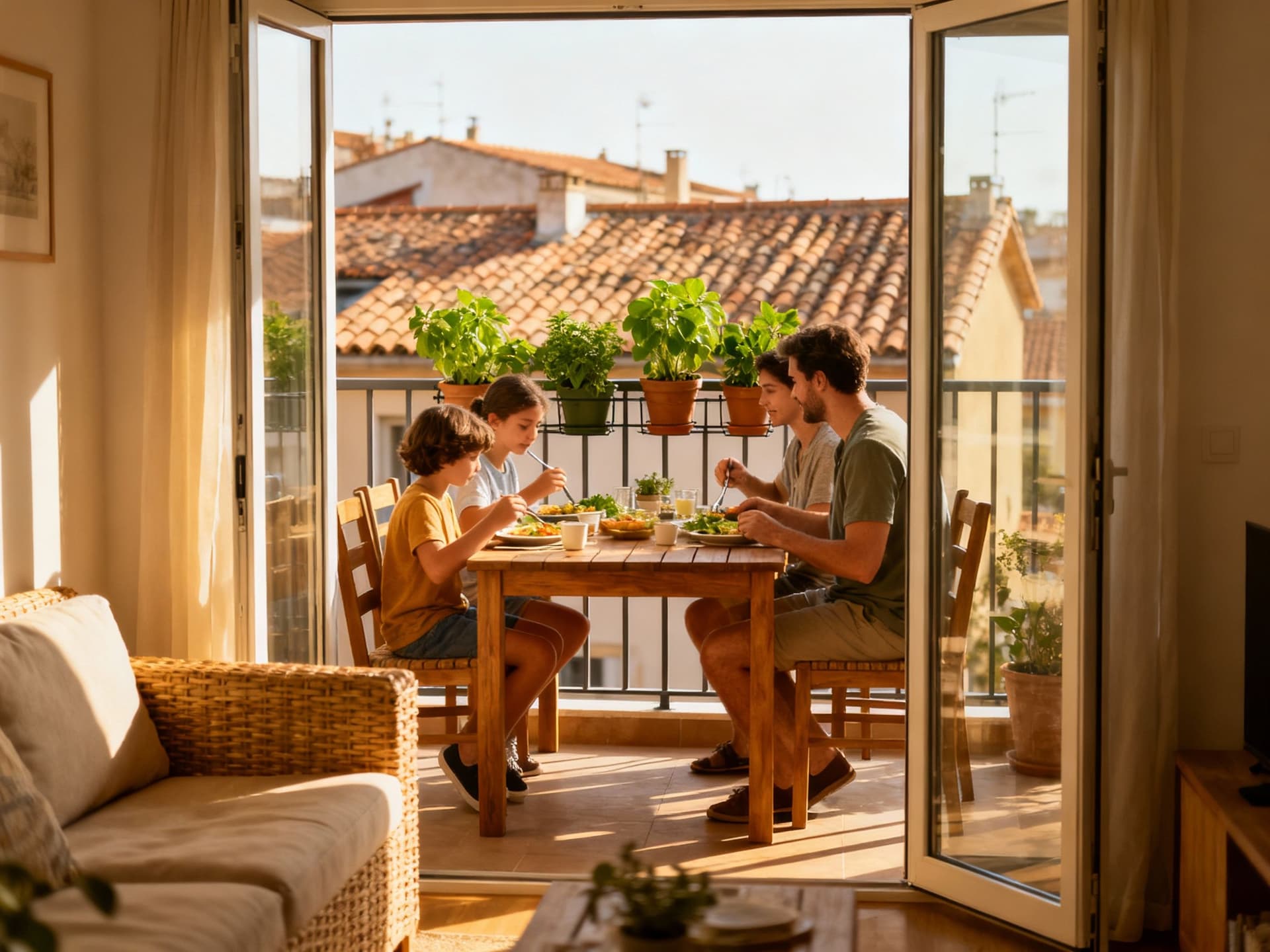France: Taxed Returns and the Lifestyle Ledger
How lifestyle choices in France map to price, net yield and tax costs — practical steps and sources to model returns before you buy.
Imagine sipping an espresso at a narrow café table on Rue des Martyrs, then buying a compact Paris apartment that you can lock, lease, and treat as a performing asset. France pairs everyday pleasures — markets, boulangeries, rail connections — with a complex fiscal and regulatory framework that materially affects returns. This piece balances the sensory reality of living in France with the cold arithmetic investors need: price per square metre, net yields, taxation and recurring ownership costs. Read the lifestyle first; keep the numbers front-of-mind when you decide whether this life is affordable as an investment.
Living the France lifestyle

France’s daily rhythm mixes market mornings, long lunches and efficient public transport. In Paris the cadence is dense and time-compressed; in Provence and on the Côte d’Azur life slows, focusing on outdoor dining and coastal recreation. Seasonal shifts matter: summer tourism lifts short‑term rental income along the coast, while winter sustains demand in alpine resorts. For an investor, lifestyle signals map directly to demand profiles — student and professional rentals near universities and business parks, family homes in commuter belts, and tourist units in coastal and ski zones.
Signature neighbourhoods and local rhythms
Paris arrondissements differ in yield, tenant types and resale velocity: inner‑city central arrondissements trade liquidity for lower gross yields while outer arrondissements and inner suburbs often offer better cash flow. In Marseille and Nice, port and coastal proximity shape short‑term rental premiums; Lyon’s Confluence and Presqu’île mix corporate demand and cultural amenities. Smaller cities such as Nantes or Toulouse balance lower entry prices with steady rental demand from students and technopôle employees.
Food, markets and seasonal life that anchor demand
Open markets, café culture and regional festivals create predictable seasonal footfall that supports hospitality and short‑let returns in many areas. Weekly markets in Aix‑en‑Provence or Toulouse sustain local commerce and help attract mid‑term tenants who value authentic neighbourhood life. Expect quieter winters outside major employment centres — a factor to weight when modelling occupancy rates for holiday versus long‑term lets.
- Lifestyle highlights: Marché d’Aligre (Paris), Vieux‑Port promenade (Marseille), Cours Mirabeau markets (Aix), Promenade des Anglais (Nice), Place du Capitole (Toulouse), weekly marché in Sarlat.
Making the move: practical considerations

Lifestyle decisions must be translated into a financial model: purchase price per m², expected gross rental yield, local taxes, maintenance and energy upgrade costs. Recent market data show regional dispersion: Paris remains the outlier in price but not always in yield; provincial towns can deliver materially higher gross yields. Use authoritative datasets to set baseline assumptions and stress‑test occupancy, repair costs and tax impacts before committing.
Property styles and what they mean for returns
Haussmannian apartments in Paris trade scarcity and capital appreciation potential for high purchase prices and strict energy rules; village houses in Occitanie often offer lower entry prices but higher capex for renovation and insulation. New builds (neuf) come with VAT and lower maintenance but command a price premium; older stock can give higher gross yields but may require energy performance renovations that affect net returns and rental eligibility.
Working with local experts who know the market
- 1) Engage a notaire (conveyancer) early to understand purchase costs (droits de mutation ~7–8% on resale) and preregistration requirements. 2) Use an accountant experienced with non‑resident tax returns to estimate net yield after social contributions and income tax. 3) Contract a local property manager if you will rent; factor management fees (typically 8–12% of rent) into cash‑flow models. 4) Commission an energy audit for properties built before 2000 to budget for compliance with minimum performance rules.
Insider knowledge: what expats wish they’d known
Expat owners commonly under‑estimate recurring costs: taxe foncière (property tax), taxe d’habitation transitions, condominium (copropriété) charges and the frequency of mandatory works. Energy‑related regulations now restrict rentals of the poorest performing units (class G), which forces owners to invest in upgrades or accept vacancy. Planning for these recurring items changes a superficially attractive gross yield into a realistic net yield calculation.
Cultural integration and everyday living
Language proficiency materially eases tenancy management, local bureaucracy and contractor negotiations. Many expats rely initially on English‑speaking agencies in Paris and Nice, but regional agents and maire’s offices often operate only in French. Social rhythms — longer lunch breaks, August closures — affect timelines for renovations and transactions; build these calendar constraints into project schedules.
Long‑term lifestyle and portfolio considerations
- • Consider diversification across city, coastal and alpine assets to balance seasonality. • Treat French property as a long‑term holding (5–10 years) for tax efficiency on capital gains for residents. • Model net yield conservatively (subtract 1–2 percentage points from published gross yields to account for taxes and upkeep). • Prioritise energy improvements that both comply with regulation and increase tenant demand.
France offers a palette of living experiences — from the packed cafés of Le Marais to seaside promenades in Nice and quiet Dordogne lanes — and each lifestyle choice maps to a distinct investment profile. Data sources such as Notaires de France and market analysts indicate price stabilisation in 2025 and regional yield dispersion; use them to underpin assumptions. Next steps: gather local price per m² for your target towns, run a 10‑year cash‑flow model including taxes and major capex, and meet a bilingual notaire and tax adviser before making an offer. That process turns a romantic move into a defensible investment decision.
Dutch investment strategist who built a practice assisting 200+ Dutch clients find Spanish assets, with emphasis on cap rates and due diligence.


